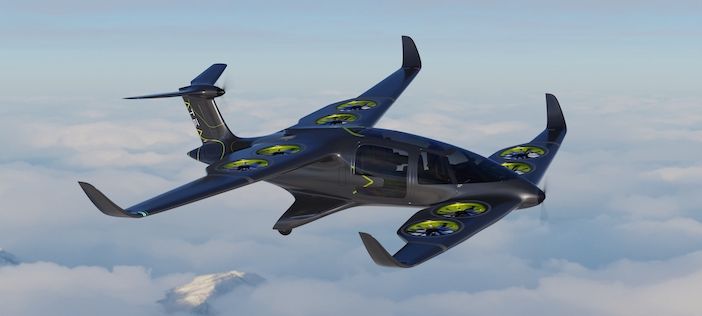French hybrid-electric vertical take-off and landing aircraft startup Ascendance Flight Technologies has raised €21 million in funding to build its first full-scale prototype.
The Toulouse-based company is targeting 2026 to deliver its first Atea, a five-seat hybrid-electric vertical take-off and landing (VTOL) aircraft. Atea will use a modular hybrid propulsion system the company is also developing called Sterna, which it also plans to sell for use in other aircraft.
The funding will be used by Ascendance to build and fly its full-scale prototype and begin certification and scale-up actions for the first aircraft.
The company has 245 letters of intent (LOI) for its Atea aircraft so far and has carried out full-scale testing of its hybrid technology.
Jean-Christophe Lambert, co-founder and CEO of Ascendance Flight Technologies said, “This fundraising round is a logical step forward in our roadmap for the industry’s energy transition. It will accelerate the technical and commercial development of our products while also contributing to our central aim: to build a sustainable model for cleaner air mobility.
“We are very proud to have brought together these renowned financial partners, whose quality and complementary nature will ensure that they can support the company through its upcoming development stages.”
The company plans to recruit 50 more people over the next 18 months. Ascendance recently appointed Stéphane Viala, formerly senior vice president of engineering and head of design organization at ATR as its engineering and program director.
Atea, which the company is marketing as a low-carbon helicopter alternative, has a range of 400km (250 miles), and a cruising speed of over 200km/h (250mph). The company says that Atea’s noise emissions will be a factor of four less and that it will produce up to 80% less CO2 compared to a traditional helicopter.
The aircraft has eight rotors built into its wings and is intended for regional, decentralized for passenger transport, medical emergencies, logistics and surveillance.
The Sterna hybrid propulsion system allows for multiple energy sources to be used at the same time and features onboard energy management and aeronautic batteries. The system can accommodate a thermal combustion module powered by sustainable aviation fuel (SAF) or hydrogen.





